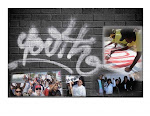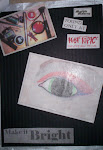Inherit the Wind Final Project: A Contemporary Film Trailer
Project Overview:
You have finished reading/ viewing Inherit the Wind, by Lawrence and Lee, and now you are ready for your final project. You are going to create the script for a ‘film trailer’ to inspire others to experience this text.
The ability to build an intelligent discussion around the viewing of a film is very important. In your film trailer, you are going to describe a contemporary/ current version of the film. Think of it as a version of the text that’s going to be released in 2011. You will create a photostory, which is a short film. You, as a composer, will make the same decisions as any producer or director of a film.
Your finished product will have ten sections: each section represents a frame of the trailer. You’ll incorporate 10 graphics, 10 excerpts from the Lawrence and Lee print text, and 10 interpretations.
Resources for reviewing the play and film
http://www.shsu.edu/~his_www/tah08/scopestrial.pdfhttp://www.smusd.org/1679206516174780/lib/1679206516174780/_files/Inherit_the_Wind-theme,_motif,_prof.help,_act_1,act_3.ppt#256,1,Inherit the Wind: Themes, Motifs, and Symbols
http://www.doesgodexist.org/SepOct96/ExposingTheLieInheritTheWind.htmlhttp://thedispersalofdarwin.wordpress.com/2009/03/28/inherit-the-wind/Introduction:
You will unveil your film trailer to a prospective audience through identifying an essential question and developing a narrative that entices the viewer to learn more about the plot through the ways you answer that essential question.
What is a film trailer?
A ‘film trailer’ is an advertisement for a future film that will be exhibited in the future at a cinema. Film trailers have now become extremely popular on the internet. Of some 10-billion videos watched online annually, movie trailers rank #3, after news and user-created video. Trailers consist of a series of selected shots from the film being advertised. Since the purpose of the trailer is to attract an audience to the film, these excerpts are usually drawn from the most exciting, funny, or otherwise noteworthy parts of the film but in abbreviated form and without giving away the ending.
For this purpose, the scenes are not necessarily in the order in which they appear in the film. A trailer has to achieve that in less than two and a half minutes, the maximum length allowed by theaters.
What is an essential question?
An essential question is a question you pose as a central organizing principle. All information that is collected is helps the audience to learn answers to the essential question you have proposed. Essential questions help to clarify why people have different kinds of ideas. Have you ever wondered where ideas originate? This project is designed to encourage you to become a self-conscious learner, exploring not only the what, but also the how and why of knowing.
The project focuses on the nature of truth and reality and the role in the world each of us has constructed. The project challenges you to become an independent, introspective, and self-motivated learner. This project will embrace the nature of ideas via three different, but very much related ways of zooming in to look at the world: (1) the human; (2) the natural/biological; and (3) the spiritual. Through the use of ethical and moral themes, you will confront, examine, and explain personal and social belief systems.
You will use a pseudonym, or a false name, when posting your film on your blog for audiences on the internet.
Some ideas for the foundation of essential questions tied to Inherit the Wind:
1. Individual rights and the good of society
2. Creationism and Darwin’s theory of evolution in our contemporary world
3. The possible incompatibility of science and religion
4. Freedom of speech and pluralism in a democratic society
5. Separation of church and state in a democratic society
6. Fundamentalism in the United States: Impacts on the contemporary political scene
7. Loss of privacy rights in times of national security
8. Dividing lines: Geographic differences that lead to different points of view
9. Freedom to think and believe outside institutional constraints
10. Inevitability and need for progress in uncertain times
11. The relationship between self-esteem and self-worth
12. The value and chaos of multiple perspectives as means of human progress
13. Reconciling culture, custom, and tradition with changing times
14. Censorship and the pursuit of the common good: Irreconcilable differences?
15. Controversies and successes: The American Civil Liberties Union
Gathering your thoughts --- and materials you’ve already constructed
Now it’s time to start. When do you begin? Begin by assembling the materials you have already created during the Inherit the Wind unit. What can you draw out of these materials to use in your film trailer? They can help you to draw ideas for this project; let them serve as your initial brainstorming.
Go for it! This is new media composition in the classroom for the 21st century learner: you.





